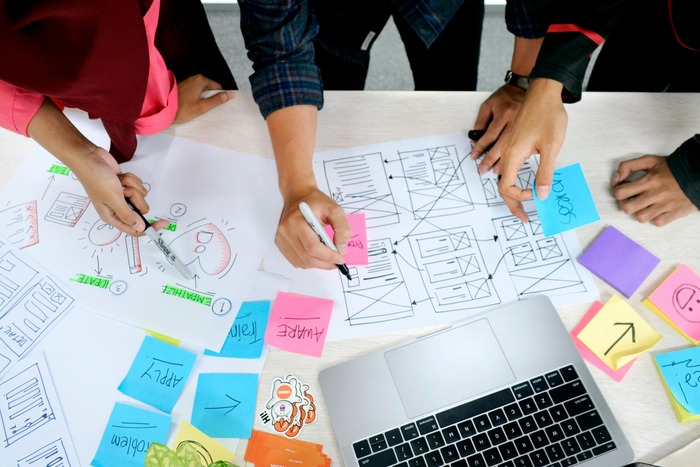
The rapidly evolving landscape of global communication calls for the automation of translation workflows. Automating these processes significantly enhances efficiency, accuracy, and speed, enabling organizations to keep pace with the demands of multilingual communication.
Translation automation stands as a pivotal element in contemporary translation strategies, revolutionizing how we approach language barriers.
Utilizing Translation Management Systems (TMS)
Translation management systems are comprehensive localization systems with multiple features that simplify project management, automate routine workflows, and offer an organized platform for managing multiple translation projects simultaneously.
Selecting an appropriate TMS requires a thorough evaluation of its compatibility with current workflows, its user-friendliness, and the ability to integrate seamlessly with other automation tools.
These systems often feature dashboards that provide real-time insights into project status, budgeting, and resource allocation, enhancing transparency and control over translation projects.
Machine translation
Implementing MT tools into translation workflows enables the swift translation of extensive content, making it a valuable asset for organizations dealing with multilingual communication.
One critical aspect of leveraging MT tools effectively is customizing the output to align with specific industry jargon and terminology. This customization ensures that translations are not only accurate but also relevant to the subject matter.
Translation memory

A TM database captures and stores previously translated segments, allowing for their reuse in subsequent projects. This not only expedites the translation process but also maintains uniformity across different documents.
Integrating translation memories into translation workflows greatly reduces the translators' workload, especially in dealing with repetitive or similar content. These databases work by matching new texts with stored segments, suggesting previously translated equivalents, which translators can then review and adapt if necessary.
This approach ensures consistency in terminology and style across multiple projects, a critical factor in maintaining brand voice and technical accuracy.
Quality assurance
Automated quality assurance tools play a vital role in maintaining high translation standards by meticulously scanning for errors, and inconsistencies, and verifying that the translated content aligns with the required quality benchmarks.
These tools employ sophisticated algorithms to detect grammatical, syntactical, and contextual errors, ensuring translations are not only accurate but also read naturally in the target language. They also check for uniformity in terminology, especially important in specialized fields like legal, medical, or technical translations.
Adopting Collaborative Tools for Team Coordination

Collaborative tools and platforms significantly enhance translation workflows by enabling seamless communication, and efficient file sharing, and providing a platform for real-time feedback among team members.
These tools bridge the gaps between translators, editors, project managers, and clients, ensuring everyone stays informed and aligned throughout the translation process.
Collaborative platforms often feature real-time editing capabilities, allowing multiple users to work on the same document simultaneously. This feature not only speeds up the translation process but also ensures consistency as changes made by one team member become instantly visible to others.
This leads to streamlined file sharing, centralizing all relevant documents and resources in one accessible location. Additionally, these tools typically include features for task assignment, progress tracking, and deadline reminders, further enhancing project management efficiency.
Data Analytics and Reporting
Data analytics and reporting tools serve as powerful instruments for identifying trends, pinpointing inefficiencies, and measuring overall performance. By meticulously analyzing critical data points such as translation speed, error rates, and resource utilization, organizations gain the ability to make data-driven decisions that can significantly optimize their translation workflows.
These tools go beyond basic analytics; they can dissect each stage of the translation process to reveal areas that require attention or improvement.
Likewise, analyzing translation speed can help in balancing workloads and setting realistic deadlines. Reporting tools extend their utility by tracking project progress, enabling project managers to keep a close eye on deadlines and deliverables. They also play a crucial role in budget management, offering insights into the cost-effectiveness of the translation process.
Incorporating Feedback Loops
Incorporating feedback loops into translation workflows involves consistently collecting and meticulously analyzing feedback from a variety of sources: clients, translators, and end-users.
By embracing this feedback, organizations can identify specific areas needing improvement, adjust their translation strategies accordingly, and enhance the overall quality of their translations.
Regularly integrating this feedback into the workflow ensures that translations are not static; they continuously evolve and adapt to meet the dynamic needs of clients and the changing landscape of the industry.
This strategy fosters a culture of continuous learning and adaptation, essential in our fast-paced world. Feedback loops ensure that every stakeholder has a voice in the process, leading to more refined, user-centric translation.
Summary
As technology continues to evolve, the future of translation workflows looks promising, with greater efficiency and accuracy. Adopting these strategies is a step forward in meeting the linguistic challenges of today's interconnected world.

